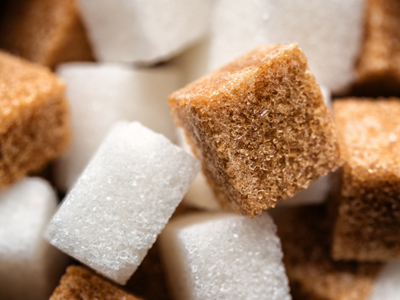
Ask the AI Tutor
Need help with The Fight to Abolish Slavery 02? Ask our AI Tutor!
AI Tutor - Lucy
Connecting with Tutor...
Please wait while we establish connection

A sugar boycott was organised by Elizabeth Heyrick in Leicester to protest against slavery.
The Fight to Abolish Slavery 02
Discover how changing ideas, speeches, and growing industries helped people in Britain and beyond challenge slavery and push for laws that recognised enslaved people as human beings.
1 .
What was the slogan of the Society for the Abolition of the Slave Trade?
Am I not a man and a brother
Live and let live
Men are born equal
Souls without chains
It was formed in London and one of its aims was to educate the general public about the injustice of the slave trade
2 .
Who organised a sugar boycott in Leicester to protest against slavery?
Amelia Jackson
Elizabeth Heyrick
Patience Sturgess
Sarah Cahill
Slave labour was used on the sugar plantations of the West Indies
3 .
Which runaway slave was legally set free, thanks to Granville Sharp?
Jackson Short
Jeremy Tall
Jonathan Strong
Joshua Stout
His owner recaptured him but after a court case, he was freed. Sadly he died aged 25
4 .
1791 saw a huge slave revolt on which island?
Guadeloupe
Martinique
St Domingue
St Kitts
The island later became known as Haiti
5 .
Who led the rebels on St Domingue?
Antoine L'Oratorio
Etienne Symphonique
Louvain L'Orchestre
Toussaint L'Ouverture
The island belonged to France at that time
6 .
An 1831 slave uprising on Jamaica was led by .......
Arthur Knight
Charles Payne
Matthew Chalmers
Samuel Sharpe
This revolt helped to end British slavery
7 .
Anti-abolitionists thought that freed slaves would .......
attack their former owners
kill anti-abolitionists
refuse to work and become lazy
set fire to plantations
The abolitionists used more powerful arguments linked to human rights
8 .
The British slave trade was abolished in which year?
1803
1807
1811
1814
TRADE was abolished throughout the British Empire but not slavery itself
9 .
Slavery itself was abolished in all British colonies in which decade?
1810s
1820s
1830s
1840s
The Act was passed as law in August of 1833
10 .
Following abolition, what did the slave owners receive?
Compensation
Death threats
Knighthoods
Nothing
The total amount that Parliament set aside for compensation to be paid to slave owners was twenty million pounds. At the time of writing this quiz, the equivalent sum today would have been two billion pounds!
You can find more about this topic by visiting BBC Bitesize - The abolition of the slave trade in Britain
**Unlimited Quizzes Await You! 🚀**
Hey there, quiz champ! 🌟 You've already tackled today's free questions.
Ready for more?
Ready for more?
🔓 Unlock UNLIMITED Quizzes and challenge yourself every day. But that's
not all...
not all...
🔥 As a Subscriber you can join our thrilling "Daily Streak" against other
quizzers. Try to win a coveted spot on our Hall of Fame Page.
quizzers. Try to win a coveted spot on our Hall of Fame Page.
Don't miss out! Join us now and keep the fun rolling. 🎉
**Unlimited Quizzes Await You! 🚀**
Hey there, quiz champ! 🌟 You've already tackled today's free questions. Ready for more?
🔓 Unlock UNLIMITED Quizzes and challenge yourself every day. But that's not all...
🔥 As a Subscriber you can join our thrilling "Daily Streak" against other quizzers. Try to win a coveted spot on our Hall of Fame Page.
Don't miss out! Join us now and keep the fun rolling. 🎉






